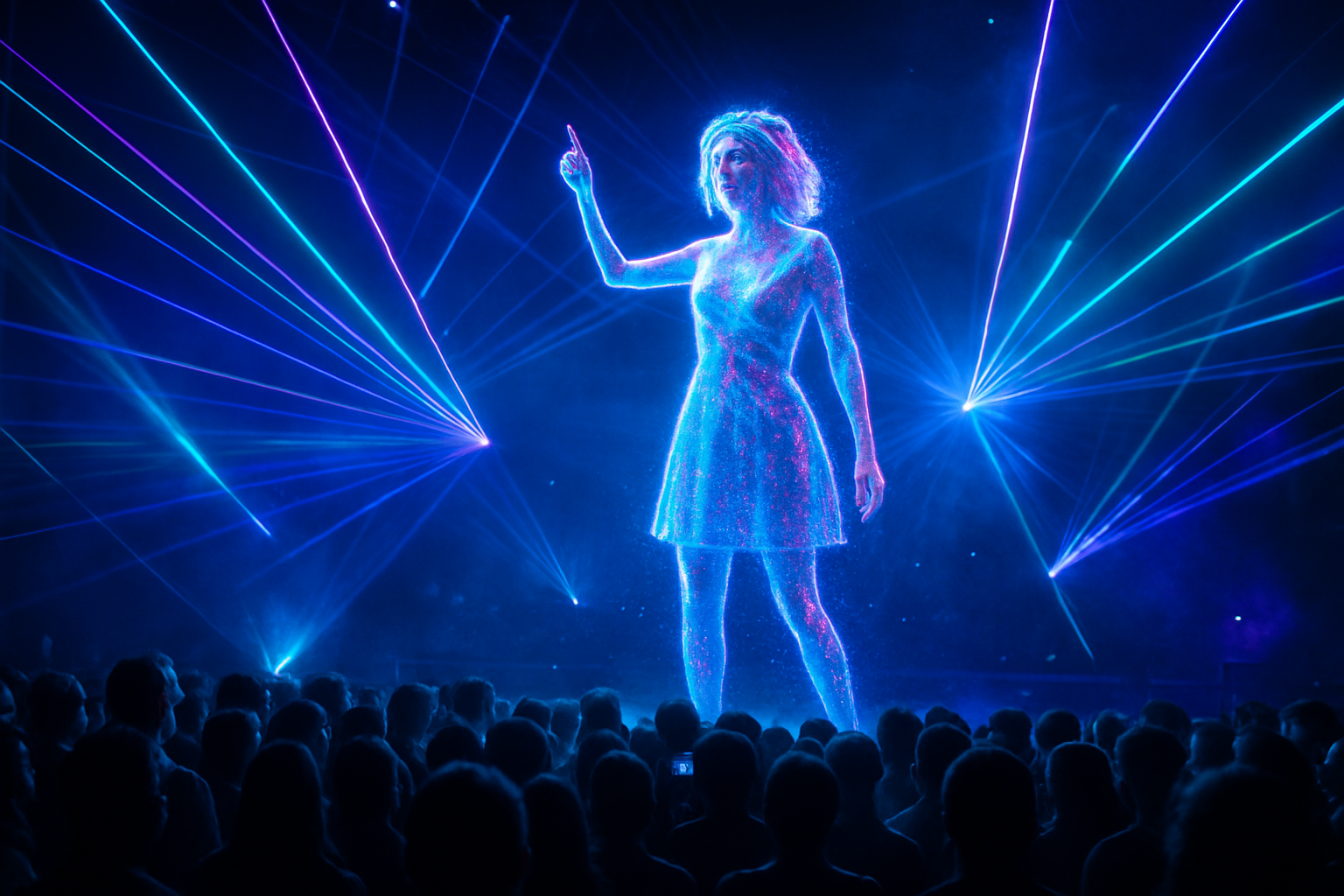Holographic Concerts: Redefining Live Music Experiences
In a groundbreaking fusion of technology and music, holographic concerts are reshaping the landscape of live entertainment. This innovative approach to performance art is captivating audiences worldwide, blurring the lines between reality and digital illusion. As holographic technology advances, it's not just bringing departed artists back to the stage, but also opening up new creative possibilities for living musicians to transcend physical limitations and deliver truly immersive experiences.

The first major holographic concert that caught global attention was the 2012 Coachella performance featuring a lifelike projection of the late rapper Tupac Shakur. This watershed moment demonstrated the potential of holography to resurrect iconic performers and sparked a wave of similar tributes, including holographic shows featuring Roy Orbison, Whitney Houston, and ABBA.
Beyond Posthumous Performances
While bringing back deceased artists has been a significant driver of holographic concert technology, the medium is evolving far beyond these nostalgic recreations. Living artists are now embracing holography to push the boundaries of their live performances. Cutting-edge acts like Gorillaz and Hatsune Miku have pioneered the integration of virtual band members and fully digital performers into live shows, creating hybrid experiences that blend physical and digital elements seamlessly.
Technical Marvels Behind the Illusion
The creation of a convincing holographic concert is a complex feat of engineering and artistry. Modern systems typically employ a combination of high-resolution projectors, specialized screens, and sophisticated software to create three-dimensional images that appear to occupy physical space. Some advanced setups utilize multiple projectors and screens to allow for 360-degree viewing, enhancing the illusion of a tangible presence on stage.
Motion capture technology plays a crucial role in creating lifelike movements for digital performers. Artists can have their performances recorded in meticulous detail, allowing for the creation of holographic avatars that mimic their every gesture and expression with uncanny accuracy.
Creative Possibilities Unleashed
Holographic technology is opening up new avenues for artistic expression that were previously impossible in traditional live settings. Artists can now interact with fantastical elements, morph their appearance in real-time, or even perform simultaneously in multiple locations. This has led to the development of entirely new forms of stage design and choreography tailored specifically for holographic performances.
One particularly exciting application is the potential for remote collaborations. Musicians separated by vast distances can now appear to share the same stage, opening up possibilities for unique cross-cultural performances and eliminating geographical barriers to creative partnerships.
The Future of Concert Experiences
As holographic technology continues to advance, we can expect to see even more immersive and interactive concert experiences. Researchers are working on systems that will allow audience members to view holograms without the need for special glasses or headsets, potentially revolutionizing the way we experience live music.
The integration of augmented reality (AR) with holographic performances is another frontier being explored. This could allow audience members to interact with digital elements of the show using their smartphones or AR glasses, creating a truly personalized and participatory experience.
Ethical Considerations and Artistic Integrity
While the potential of holographic concerts is undeniably exciting, it also raises important questions about artistic integrity and consent, particularly when it comes to posthumous performances. The use of an artist’s likeness after their death has sparked debates about the ethics of digital resurrection and the potential for exploitation of an artist’s legacy.
For living artists, holographic technology presents both opportunities and challenges. While it offers new creative outlets and the ability to reach wider audiences, there are concerns about the potential devaluation of traditional live performances and the authenticity of the artist-audience connection.
The Economic Impact on the Music Industry
Holographic concerts are not just changing the artistic landscape; they’re also reshaping the economics of live music. These high-tech shows often come with significant production costs, but they also offer the potential for scaled distribution that traditional tours cannot match. A single holographic performance can be broadcast to multiple venues simultaneously, potentially reaching millions of fans in a single night.
This scalability is particularly appealing in a post-pandemic world, where large gatherings may face ongoing restrictions. Holographic concerts offer a way to deliver immersive live experiences while maintaining social distancing measures, potentially providing a lifeline for the struggling live music industry.
Conclusion: A New Era of Musical Innovation
As holographic concert technology continues to evolve, it’s clear that we’re on the cusp of a new era in live music experiences. While it may never fully replace the raw energy of a traditional concert, holography offers exciting new possibilities for artistic expression, audience engagement, and the preservation of musical legacies. As artists and technologists continue to push the boundaries of what’s possible, audiences can look forward to ever more spectacular and immersive performances that blend the best of physical and digital worlds.





